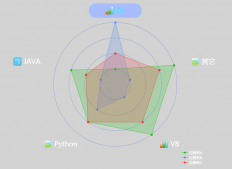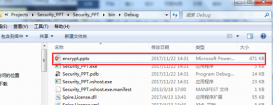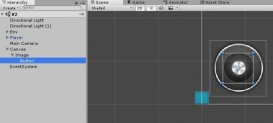在開(kāi)發(fā)中,我們經(jīng)常會(huì)使用IO操作,例如創(chuàng)建,刪除文件等操作。在項(xiàng)目中這樣的需求也較多,我們也會(huì)經(jīng)常對(duì)這些操作進(jìn)行編碼,但是對(duì)文件的權(quán)限進(jìn)行設(shè)置,這樣的操作可能會(huì)手動(dòng)操作,現(xiàn)在介紹一種采用代碼動(dòng)態(tài)對(duì)文件設(shè)置權(quán)限的操作。
在對(duì)文件進(jìn)行權(quán)限設(shè)置在DOtNet中,會(huì)采用FileSystemAccessRule類(lèi)進(jìn)行文件的權(quán)限操作。
1.現(xiàn)在看一下FileSystemAccessRule的實(shí)現(xiàn)代碼:
|
1
2
3
4
5
6
7
8
9
10
11
12
13
14
15
16
17
18
19
20
21
22
23
24
25
26
27
28
29
30
31
32
33
34
35
36
37
38
39
40
41
42
43
44
45
46
47
48
49
50
51
52
53
54
55
56
57
58
59
60
61
62
63
64
65
66
67
68
69
70
71
72
73
74
75
76
77
78
79
80
81
82
83
84
85
86
87
88
89
90
91
92
93
94
95
96
97
98
99
100
101
102
|
public FileSystemAccessRule( IdentityReference identity, FileSystemRights fileSystemRights, AccessControlType type ) : this( identity, AccessMaskFromRights( fileSystemRights, type ), false, InheritanceFlags.None, PropagationFlags.None, type ) { } public FileSystemAccessRule( String identity, FileSystemRights fileSystemRights, AccessControlType type ) : this( new NTAccount(identity), AccessMaskFromRights( fileSystemRights, type ), false, InheritanceFlags.None, PropagationFlags.None, type ) { } // // Constructor for creating access rules for folder objects // public FileSystemAccessRule( IdentityReference identity, FileSystemRights fileSystemRights, InheritanceFlags inheritanceFlags, PropagationFlags propagationFlags, AccessControlType type ) : this( identity, AccessMaskFromRights( fileSystemRights, type ), false, inheritanceFlags, propagationFlags, type ) { } public FileSystemAccessRule( String identity, FileSystemRights fileSystemRights, InheritanceFlags inheritanceFlags, PropagationFlags propagationFlags, AccessControlType type ) : this( new NTAccount(identity), AccessMaskFromRights( fileSystemRights, type ), false, inheritanceFlags, propagationFlags, type ) { } internal FileSystemAccessRule( IdentityReference identity, int accessMask, bool isInherited, InheritanceFlags inheritanceFlags, PropagationFlags propagationFlags, AccessControlType type ) : base( identity, accessMask, isInherited, inheritanceFlags, propagationFlags, type ) { } #endregion #region Public properties public FileSystemRights FileSystemRights { get { return RightsFromAccessMask( base.AccessMask ); } } internal static int AccessMaskFromRights( FileSystemRights fileSystemRights, AccessControlType controlType ) { if (fileSystemRights < (FileSystemRights) 0 || fileSystemRights > FileSystemRights.FullControl) throw new ArgumentOutOfRangeException("fileSystemRights", Environment.GetResourceString("Argument_InvalidEnumValue", fileSystemRights, "FileSystemRights")); Contract.EndContractBlock(); if (controlType == AccessControlType.Allow) { fileSystemRights |= FileSystemRights.Synchronize; } else if (controlType == AccessControlType.Deny) { if (fileSystemRights != FileSystemRights.FullControl && fileSystemRights != (FileSystemRights.FullControl & ~FileSystemRights.DeleteSubdirectoriesAndFiles)) fileSystemRights &= ~FileSystemRights.Synchronize; } return ( int )fileSystemRights; } internal static FileSystemRights RightsFromAccessMask( int accessMask ) { return ( FileSystemRights )accessMask; }} |
2.由于FileSystemAccessRule繼承自AccessRule,現(xiàn)在看一下AccessRule的源碼:
|
1
2
3
4
5
6
7
8
9
10
11
12
13
14
15
16
17
18
19
|
/// <summary> /// 表示用戶的標(biāo)識(shí)、訪問(wèn)掩碼和訪問(wèn)控制類(lèi)型(允許或拒絕)的組合。<see cref="T:System.Security.AccessControl.AccessRule"/> 對(duì)象還包含有關(guān)子對(duì)象如何繼承規(guī)則以及如何傳播繼承的信息。 /// </summary> public abstract class AccessRule : AuthorizationRule { /// <summary> /// 使用指定的值初始化 <see cref="T:System.Security.AccessControl.AccessRule"/> 類(lèi)的一個(gè)新實(shí)例。 /// </summary> /// <param name="identity">應(yīng)用訪問(wèn)規(guī)則的標(biāo)識(shí)。此參數(shù)必須是可以強(qiáng)制轉(zhuǎn)換為 <see cref="T:System.Security.Principal.SecurityIdentifier"/> 的對(duì)象。</param><param name="accessMask">此規(guī)則的訪問(wèn)掩碼。訪問(wèn)掩碼是一個(gè) 32 位的匿名位集合,其含義是由每個(gè)集成器定義的。</param><param name="isInherited">如果此規(guī)則繼承自父容器,則為 true。</param><param name="inheritanceFlags">訪問(wèn)規(guī)則的繼承屬性。</param><param name="propagationFlags">繼承的訪問(wèn)規(guī)則是否自動(dòng)傳播。如果 <paramref name="inheritanceFlags"/> 設(shè)置為 <see cref="F:System.Security.AccessControl.InheritanceFlags.None"/>,則將忽略傳播標(biāo)志。</param><param name="type">有效的訪問(wèn)控制類(lèi)型。</param><exception cref="T:System.ArgumentException"><paramref name="identity"/> 參數(shù)的值不能強(qiáng)制轉(zhuǎn)換為 <see cref="T:System.Security.Principal.SecurityIdentifier"/>,或者 <paramref name="type"/> 參數(shù)包含無(wú)效值。</exception><exception cref="T:System.ArgumentOutOfRangeException"><paramref name="accessMask"/> 參數(shù)的值為零,或者 <paramref name="inheritanceFlags"/> 或 <paramref name="propagationFlags"/> 參數(shù)包含無(wú)法識(shí)別的標(biāo)志值。</exception> protected AccessRule(IdentityReference identity, int accessMask, bool isInherited, InheritanceFlags inheritanceFlags, PropagationFlags propagationFlags, AccessControlType type); /// <summary> /// 獲取與此 <see cref="T:System.Security.AccessControl.AccessRule"/> 對(duì)象關(guān)聯(lián)的 <see cref="T:System.Security.AccessControl.AccessControlType"/> 對(duì)象。 /// </summary> /// /// <returns> /// 與此 <see cref="T:System.Security.AccessControl.AccessRule"/> 對(duì)象關(guān)聯(lián)的 <see cref="T:System.Security.AccessControl.AccessControlType"/> 對(duì)象。 /// </returns> public AccessControlType AccessControlType { get; } } |
看來(lái)DotNet中實(shí)現(xiàn)文件權(quán)限設(shè)置的操作的類(lèi),現(xiàn)在提供幾個(gè)具體的文件設(shè)置操作代碼:
3.獲取目錄權(quán)限列表:
|
1
2
3
4
5
6
7
8
9
10
11
12
13
14
15
16
17
18
19
20
21
22
|
/// <summary> /// 獲取目錄權(quán)限列表 /// </summary> /// <param name="path">目錄的路徑。</param> /// <returns>指示目錄的權(quán)限列表</returns> public IList<FileSystemRights> GetDirectoryPermission(string path) { try { if (!DirectoryExists(path)) return null; IList<FileSystemRights> result = new List<FileSystemRights>(); var dSecurity = Directory.GetAccessControl(new DirectoryInfo(path).FullName); foreach (FileSystemAccessRule rule in dSecurity.GetAccessRules(true, true, typeof(NTAccount))) result.Add(rule.FileSystemRights); return result; } catch (Exception e) { throw new Exception(e.Message, e); } } |
4.設(shè)置目錄權(quán)限
|
1
2
3
4
5
6
7
8
9
10
11
12
13
14
15
16
17
18
19
20
21
22
23
24
25
26
27
28
29
30
31
32
33
34
35
36
37
38
39
40
|
/// <summary> ///設(shè)置目錄權(quán)限 /// </summary> /// <param name="path">目錄的路徑。</param> /// <param name="permission">在目錄上設(shè)置的權(quán)限。</param> /// <returns>指示是否在目錄上應(yīng)用權(quán)限的值。</returns> public bool SetDirectoryPermission(string path, FileSystemRights permission) { try { if (!DirectoryExists(path)) return false; var accessRule = new FileSystemAccessRule("Users", permission, InheritanceFlags.None, PropagationFlags.NoPropagateInherit, AccessControlType.Allow); var info = new DirectoryInfo(path); var security = info.GetAccessControl(AccessControlSections.Access); bool result; security.ModifyAccessRule(AccessControlModification.Set, accessRule, out result); if (!result) return false; const InheritanceFlags iFlags = InheritanceFlags.ContainerInherit | InheritanceFlags.ObjectInherit; accessRule = new FileSystemAccessRule("Users", permission, iFlags, PropagationFlags.InheritOnly, AccessControlType.Allow); security.ModifyAccessRule(AccessControlModification.Add, accessRule, out result); if (!result) return false; info.SetAccessControl(security); return true; } catch (Exception e) { throw new Exception(e.Message, e); } } |
5.設(shè)置目錄權(quán)限列表
|
1
2
3
4
5
6
7
8
9
10
11
12
13
14
15
16
17
18
19
20
21
22
|
/// <summary> /// 設(shè)置目錄權(quán)限列表 /// </summary> /// <param name="path">目錄的路徑。</param> /// <param name="permissions">在目錄上設(shè)置的權(quán)限。</param> /// <returns>指示是否在目錄上應(yīng)用權(quán)限的值。</returns> public bool SetDirectoryPermissions(string path, FileSystemRights[] permissions) { try { if (!DirectoryExists(path) || permissions == null || !permissions.Any()) return false; foreach (var permission in permissions) if (!SetDirectoryPermission(path, permission)) return false; return true; } catch (Exception e) { throw new Exception(e.Message, e); } } |
以上是對(duì)文件權(quán)限設(shè)置操作的一個(gè)簡(jiǎn)單介紹。
以上就是本文的全部?jī)?nèi)容,希望對(duì)大家有所幫助,同時(shí)也希望多多支持服務(wù)器之家!
原文鏈接:http://www.cnblogs.com/pengze0902/p/5988595.html
















